Category Archives: Corals
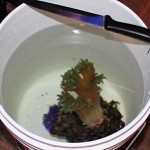
How to Frag Leather Corals
A good friend and fellow hobbyist asked me for a frag from one of my corals that he has really liked for a while now. As I was getting the frag for him, I thought I would take the time to show how I prefer to frag leather corals.This is not the only way to frag a coral, but it is the way that I find the easiest for both me and the coral.
Step – 1 Plan the frag
By this I mean you should decide what part of the leather you want to frag. In this instance, there is a small growth near the base of the blue mushrooms coral on the left hand side (as pictured below). I could have chosen almost any part of this leather to frag and it really would not have mattered too much, but that small growth just seamed it would be easier to frag.
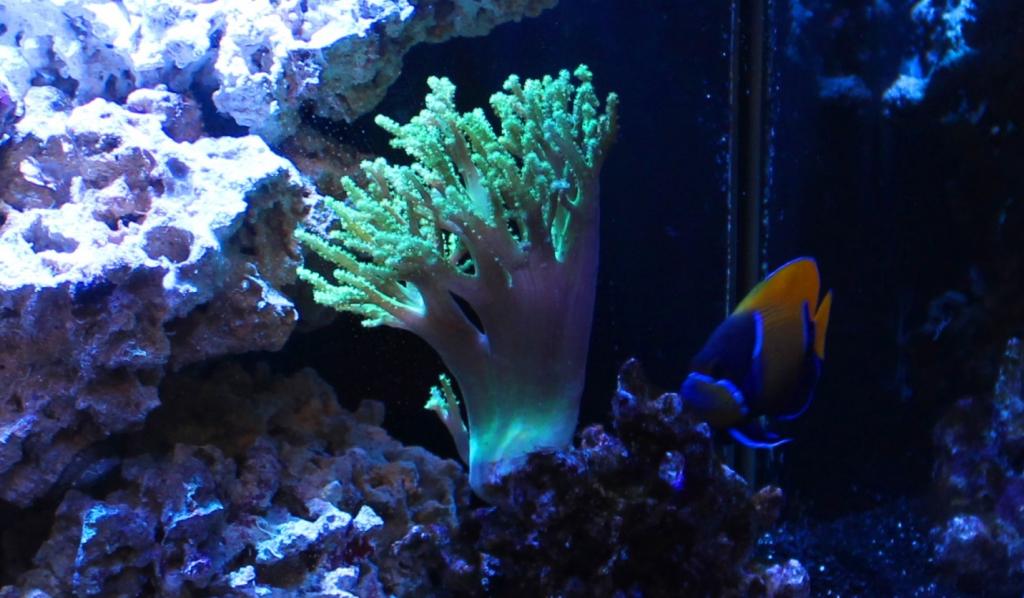
Step Two – Remove and Frag the leather
It is always best if you can remove the leather from the aquarium when you frag it. In this case I had removed the leather and the rock it was sitting on and placed it in a 5 gallon pale of tank water.There are two reasons for doing this. The first is that leathers can release toxins when being fragged, and the second is that you can add a coral treatment to the container to help the coral heal faster.Many others have successfully fragged leathers while still in the display tank.I have always been able to remove mine for fragging so I have always done that.
Step three – Frag it
This is simply cutting a part of the coral off from the rest of the coral. Make sure you use a very sharp razor or butcher’s knife and cut the peace off in one smooth and gentle motion.Remove the frag to a second container of water and leave the leather in the current container. Add a good quality coral treatment to both containers to help the corals heal the damaged areas. Once the main coral has had about 10 minutes in the coral treatment, you can replace it to your main display tank. I would also suggest having fresh carbon running on your set-up to remove any toxins the leather might release.
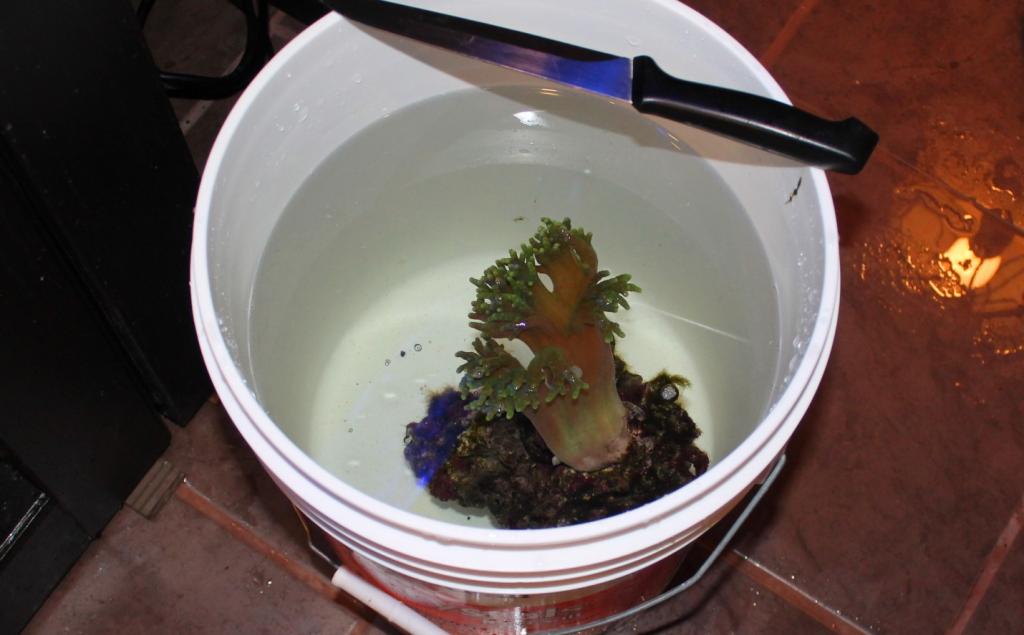
Step four – Attach the frag
In my experience, you have to let leathers naturally attach themselves to something.Every time I have tried an approach that involved glues or any other type of method, I found the leather will just produce extra slime coating and become detached within a day or two. I have the best success by using a rubber band to gently hold the frag to a frag plug or piece of rock. You want just enough pressure to hold the frag in place, any more and you could cause the frag to divide into two smaller pieces and both becoming detached.
You don’t have to worry about attaching the frag so it sits up-right as it will grow up-wards towards the light in no time at all.
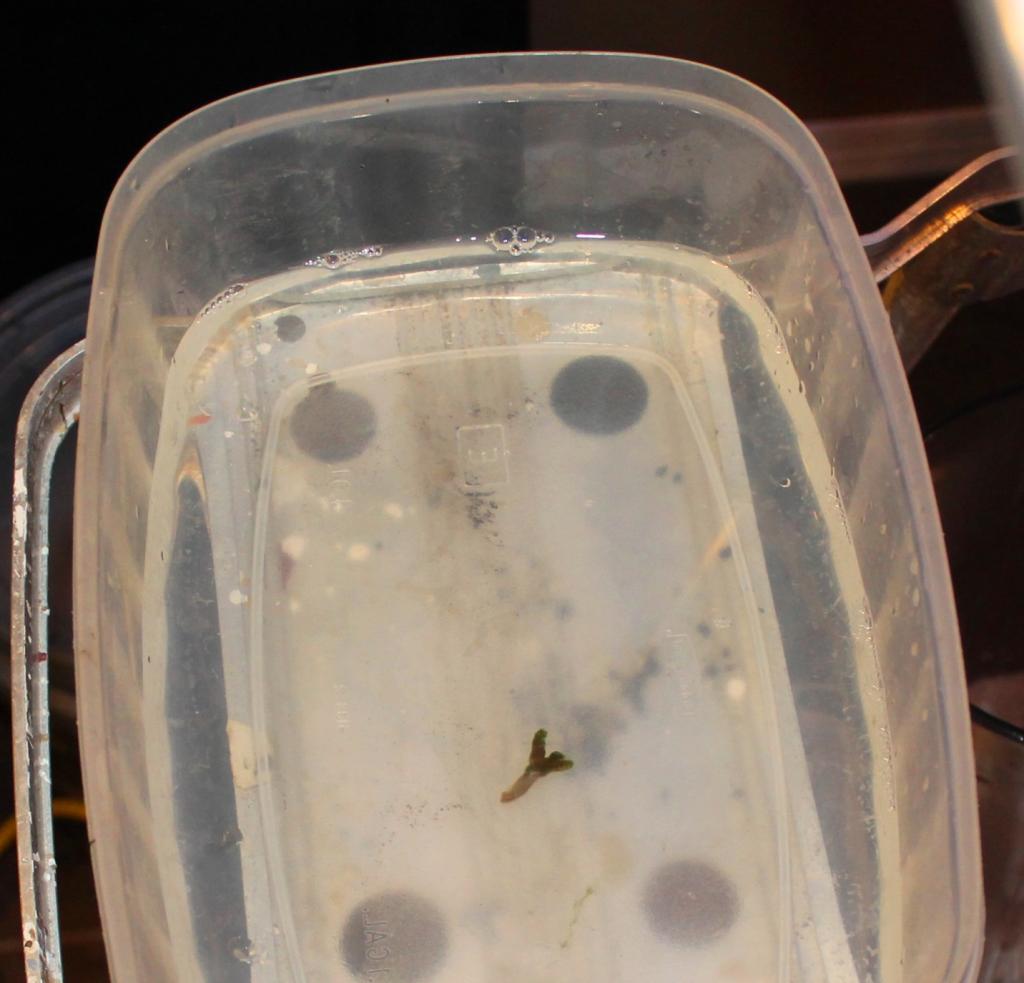
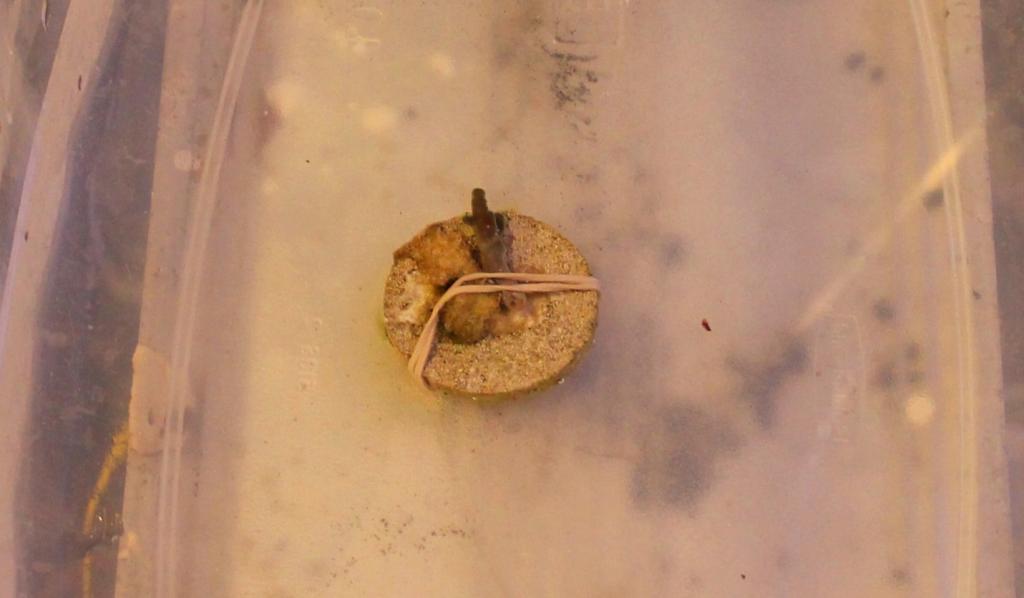
Step 5 – Return the frag
I always like returning the frag to the display tank as soon as it had about 10 minutes in the other container with a coral treatment. I will place the frag in a lower area of the aquarium with low flow to help the leather attach to the frag plug. In my experience, it takes about two to three weeks for the frag to attach to the plug assuming it is not getting stressed by crabs (or other critters) and it’s lighting and water quality needs are being met.
The below picture of the frag was taken after one day after being fragged
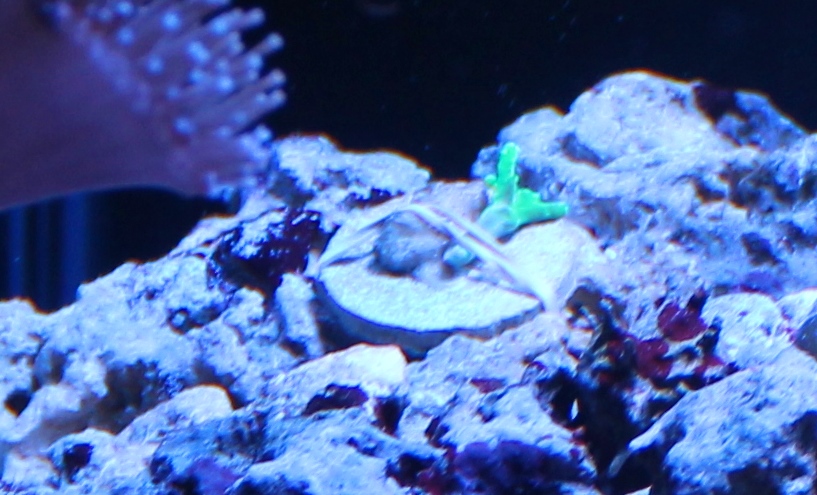
The below was taken four days after being fragged. You can see the leather is starting to turn up-wards towards the light and is also starting to extend its polyps.
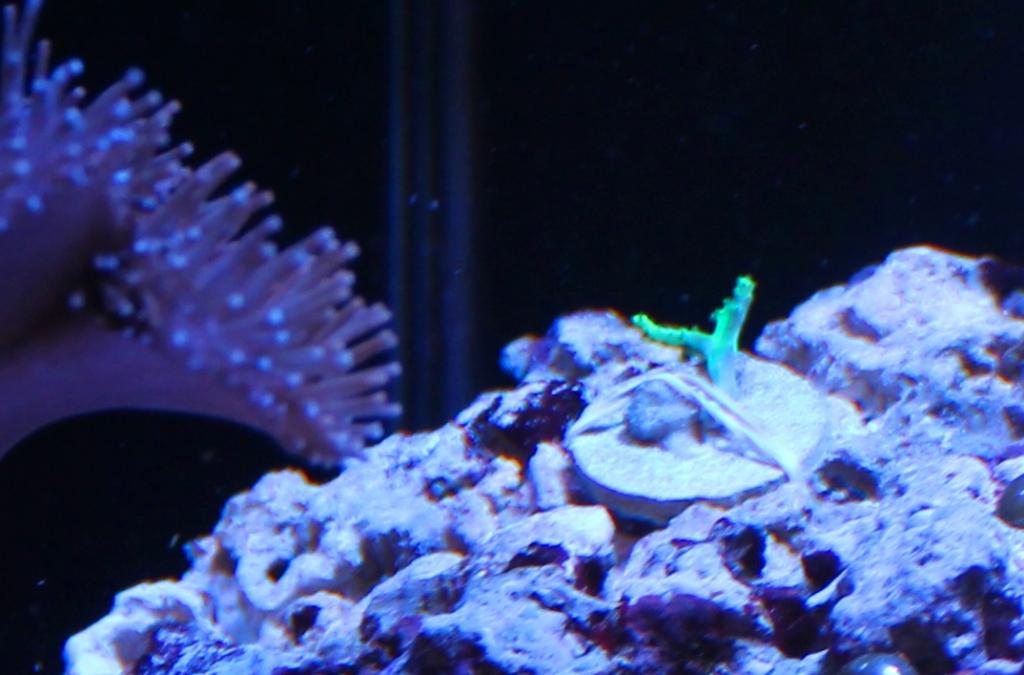
The below picture was taken 9 days after being fragged. The frag has already started to grow up-wards towards the light and looks like it is very close to becoming attached to the coral plug/
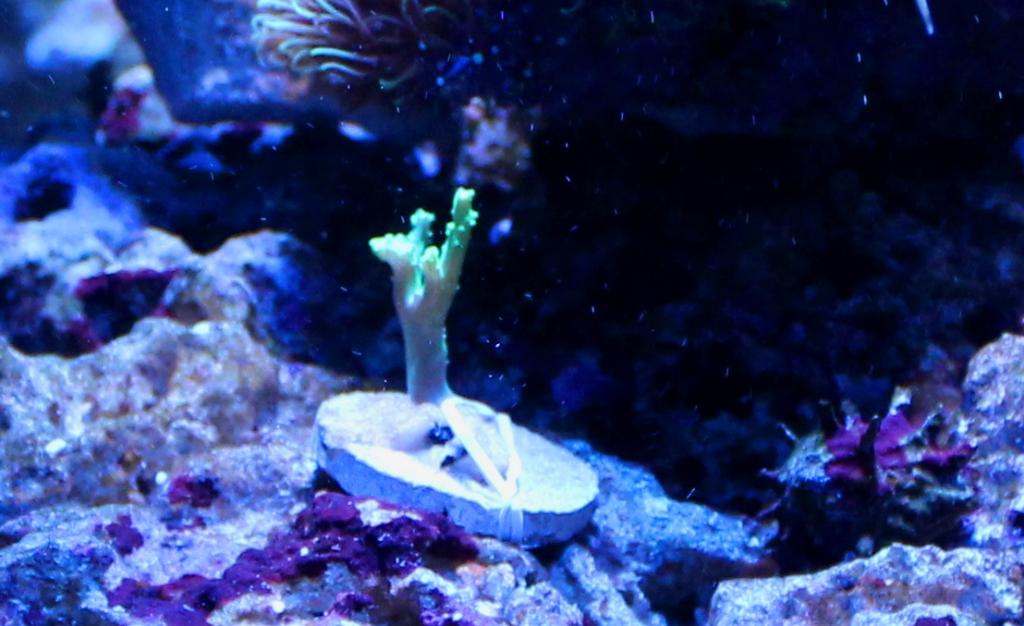
The next day after being fragged, the main leather has fully bounced back recovering from the process and looks to be in pretty good shape.
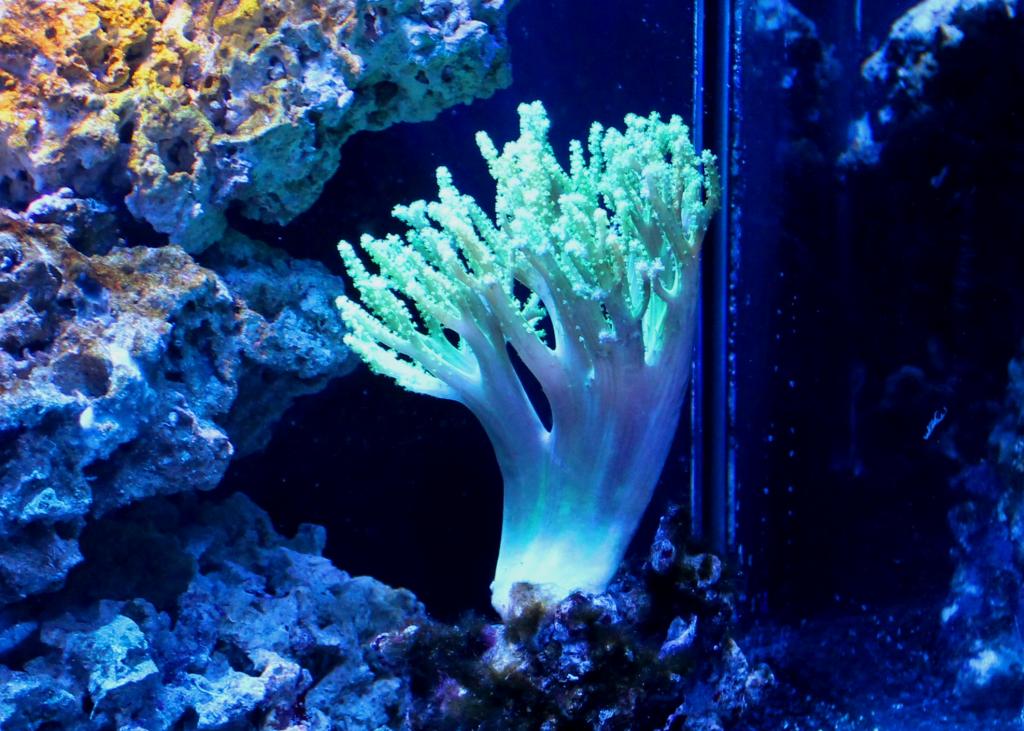
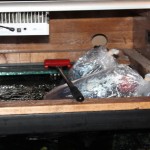
Acclimating Corals
In my experience, corals need to be acclimated, just as fish or inverts would need to be when adding them to your aquarium.The below process is what I would typically follow when acclimating corals to my tank.Although I do not quarantine my corals, I will give them a preventative treatment dip to rid them of potential hitch hikers.I also carefully inspect any coral before purchasing it when I buy it from a store or even from another hobbyist.If I do notice hitch hikers on the coral, or the tank the coral doesn’t look healthy to me, I will not buy the coral.This is also the reason why I do not like to buy corals on-line as I want to personally inspect the coral before I decide to buy it. If you do choose to quarantine your corals, I would suggest to use the below process to acclimate the coral to your quarantine tank repeating the same process when you move the coral to your display tank.
Step 1 – Float the bag
I will keep the bag I got the coral in closed and let it float in tank water for about 30 to 45 minutes allowing the temp of the water in the bag to become the same as the tank water.If I am floating the bag in the tank, I will lower the lighting level to about 10% of normal.Most of the time I will float the bag in the sump were the lighting level will be very low just so I do not have to change the lighting in my tank more than what I have to
Step 2 – Remove the coral and water
Once I am confident the temp of the water in the bag matches the tank water, I will remove the coral and the tank/bag water from the store and place them both in a separate container. I have a few different sized containers that I use to accommodate different sizes of corals and different amounts of water.
Step 3 – Acclimate the coral to your water parameters
Now that I have the coral in a different container with the tank water from the store, I will start adding tank water to this container. I will typically add about ½ cup of water about every five minutes or so. Once the container has become full, I will remove and discard about half the water from the container so I can continue adding water from my tank to this container. I will repeat this about three times or until I am comfortable that I have replaced all of the water from the store with water from my tank
Step – 4 Observation
While I am adding water from my tank to the container with the new coral in it, I will be carefully watching the coral for any hitchhikers.
Step -5 Treatment dip
I will always give the corals a preventative treatment with a coral dip before placing them in my display tank.The below is the coral dip that I like to use. Just make sure that whatever coral treatment dip you choose that you careful follow the instructions on the bottle.If I noticed any hitch-hikers while acclimating the coral to the tank water, I will ensure they are removed / killed off by the coral treatment dip.If I see any harmful SPS crabs, I will get a pair of tweezers and manually remove them as these crabs are very hardy and some of them can survive the coral treatment dip.
I can not stress the importance of using a coral treatment dip enough. I once skipped this step and introduced flat worms into my tank. It took me a very very long time and a lot of effort to get the flat worms under control.I will never make that mistake again.So far, I have been very successful keeping hitch hikers out of my tank by using a coral dip.
Step 6 – Add the coral to the tank
Once I am confident the treatment has removed any potential hitch hikers, I will lower the lighting level in the tank to about 1/3 of normal (if not already lowered). Next I will remove the coral from the current container and place it in a second container of water that I just removed from my display tank.The reason for this is to remove any trace amounts of the coral treatment before placing the coral in my tank.I will gently swish it around a little in this second container before removing the coral by hand and placing it in my display tank.All corals will initially be placed on the bottom of my tank
Step 7 – Acclimate the coral to my tank lighting
Now that the new coral is in the tank at a lower lighting level, I will leave the lighting at this current level for a few hours.I will slowly increase the lighting level back to its normal level over the next 2 or 3 hours.Before switching to LEDs, I would place 4 or 5 layers plain of white paper on top of the tank lids to block out some of the light and slowly remove one layer at a time allowing more and more light to get to the tank.
The next day, once the tank lights are on at their normal setting, I will place the coral in its intended spot.If the coral is a sensitive or high light demanding coral requiring it to be placed higher in the tank (closer to the lights), I will take a few days to move it up to its intended spot, placing it a little higher on the rocks until it has reached its intended spot.
NOTE: I will never add any of the water that I used to acclimate a coral back into my tank.Once I am done acclimating the coral, I will top up my tank with some freshly made salt water to replace what I had removed during the acclimation process. I will always discard all water used to acclimate a coral.
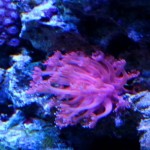
Flower Pot Coral
Scientific Name: Goniopora Sp.
Common Name: Flower Pot Coral, Goniopora, Sunflower Coral
Type of Coral: LPS (Large Polyp Stony Coral)
Lighting: Moderate
Flow: Moderate
Care Level: Moderate to Moderate / Difficult
Temperament: Peaceful to Semi-aggressive
Appearance
As the name suggests, the flower pot coral can look like a bouquet of flowers when all of it’s polyps are open and extended. The base of the colony will be rounded and the polyps will extend far beyond the base. The polyps will also have small tentacles on the ends giving the coral its flower like appearance. They can also have a verity of colors from greens, reds, and even yellows as examples.
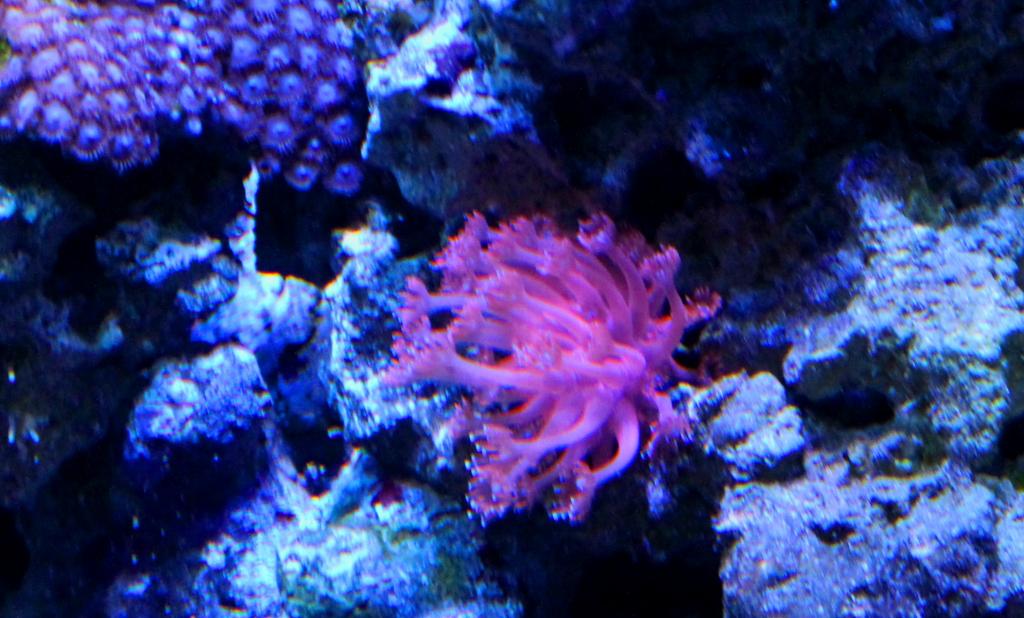
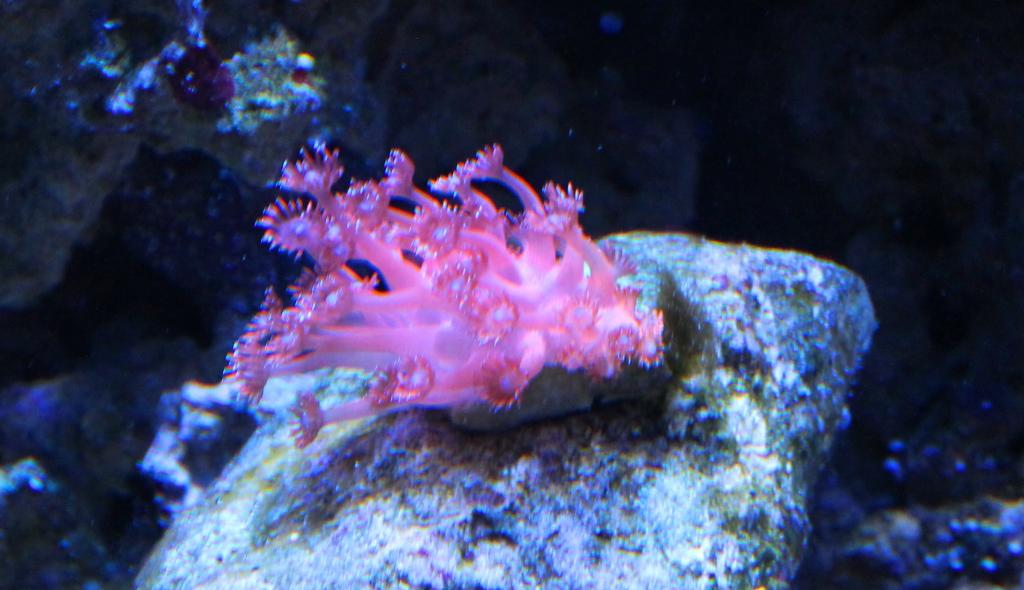
Water Conditions
The below link highlights typical water conditions flower pot corals, just as with most LPS, will require. As this is a moderately difficult coral to keep, you should ensure your dKH, Cal and Mag levels are maintained at all times with minimal nitrate and phosphate levels. As this coral also has a calcified skeleton (or base), it will consume at least some calcium from your water. In set-ups with a good amount of LPS corals, it is not uncommon to have to dose dKH and Cal in order to keep the water parameters in line. With only a few LPS corals, a good water change schedule may be enough to maintain your parameters as well as replenishing trace elements. Some studies have also suggested the flower pot coral may to better (long term) with slightly elevated nitrate levels between 1 and 5 ppm.
https://www.reefaquarium.com/2013/the-basics-of-marine-aquarium-water-parameters/
General Information
Flower pot corals should be added to mature aquariums. Provided all their requirements are met, they colony can grow to about 7 to 9 inches. This is a not a very aggressive LPS coral but it still can sting other corals. A distance of 3 or 4 inches from other corals would be a good idea.
Clownfish have also been known to host in flower pot corals in aquariums that do not have anemones. Although this will not harm the clownfish, this can sometimes stress the coral to the point where it could become damaged and prone to infections.
These corals can also benefit from the occasional feeding of micro-planton. Although the below link shows how to spot feed clams, the same process can be applied to spot feeding flower pot corals.
https://www.reefaquarium.com/2012/spot-feeding-marine-clams/
As with all corals, the exterior slime coating can be a skin irritant or even highly toxic to humans so please, handle all corals with care. I would recommend wearing rubber gloves whenever you handle corals
Fragging
Flower pot corals can be fragged.
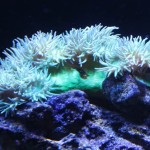
Duncan Corals
Scientific Name: Duncanopsammia Axifuga
Common Name: Duncan Coral, Whisker Coral, Daisy Coral,
Type of Coral: LPS (Large Polyp Stony Coral)
Lighting: Moderate
Flow: Moderate
Care Level: Moderate
Temperament: Peaceful to Semi-Aggressive
Appearance
Duncan corals will have a base that consists of an calcified skeleton structure covered in a green or pink colored thin layer of flesh. At the end of this structure will be individual fleshy heads with long polyps extending around the edges and a mouth in the center of the head. The heads will be a similar color to the base.
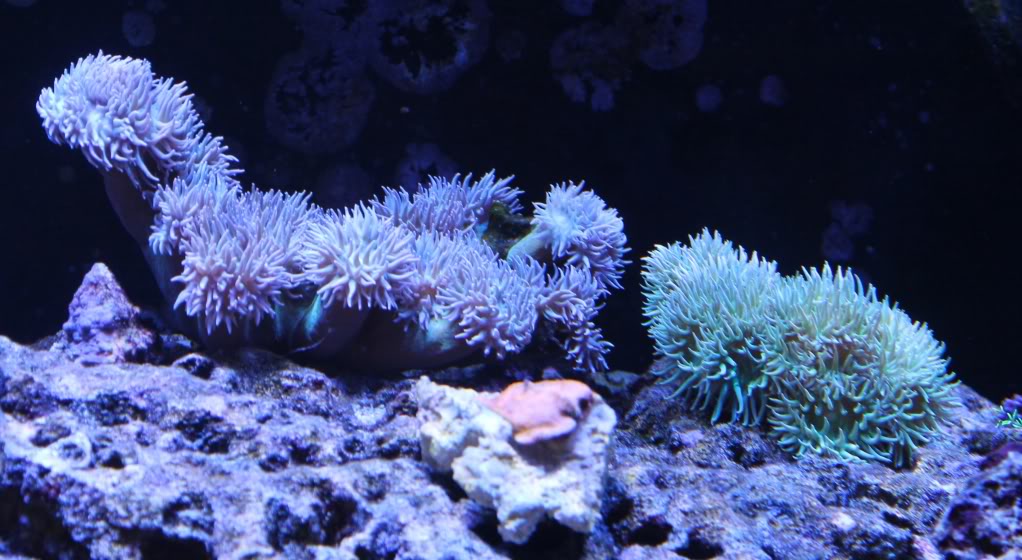
Water Conditions
The below link highlights typical water conditions Duncan corals, as with most LPS, will require. As this is a moderately difficult coral to keep, you should ensure your dKH, Cal and Mag levels are maintained at all times with minimal nitrate and phosphate levels. As this coral also has a calcified skeleton, it will consume calcium from your water. In set-ups with a good amount of LPS corals, it is not uncommon to have to dose dKH and Cal in order to keep the water parameters in line. With only a few LPS corals, a good water change schedule may be enough to maintain your parameters. In addition to the article in the below link, this coral can also benefit from maintaining strontium levels if you do not have a good water change routine using a very good quality salt.
https://www.reefaquarium.com/2013/the-basics-of-marine-aquarium-water-parameters/
General Information
Duncan corals, as with all other LPS corals, should be added to mature aquariums. Provided all their requirements are met, they can grow to a very large colony within a few short years. Unless you are planning to move or frag your duncan coral, you should give it as much as 20 inches of space in your tank.
The Duncan coral will release sweeper / feeder tentacles from its heads to collect food. This will mostly happen when the tanks lights are off. These tentacles can also sting and damage or kill other corals within reach, which is how the duncan coral will defend itself. What makes the duncan coral more peaceful than most LPS coral is that its sweeper tentacles are much shorter in comparison only measuring a few inches in length.
Although the duncan coral will get what it needs from the lighting in your tank, it can also benefit from micro plankton or manual feeding of small pcs of meaty foods placed directly on the mouths at the center of each head. Although manual feedings are not required, it will help to accelerate growth.
As with all corals, the exterior slime coating can be a skin irritant or even highly toxic to humans so please, handle all corals with care. I would recommend wearing rubber gloves whenever you handle corals
Fragging
Duncan corals can be fragged with very good success.
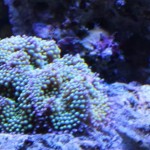
Ricordea Mushroom Corals
Scientific Name: Ricordea Florida
Common Name: Ricordea Mushroom, Anemone Mushroom
Type of Coral: Softie
Lighting: Moderate and Moderate to Low
Flow: Moderate
Care Level: Easy
Temperament: Semi-aggressive
Appearance
Ricordeas can also be found in a wide verity of colors and sizes making then a very great choice to add some color to any reef aquarium. It is also common to find some that have three different colors on them, one color around the edge of the cap, one color on the cap itself, and a third color in the center of the ricordeas. The surface of their cap looks like it is made up of small little balls giving them a very interesting structure. They also commonly range in size from ½ inch to 3 inches, but there are a few types of Ricordeas that do get larger. The below pictures are just a few examples.
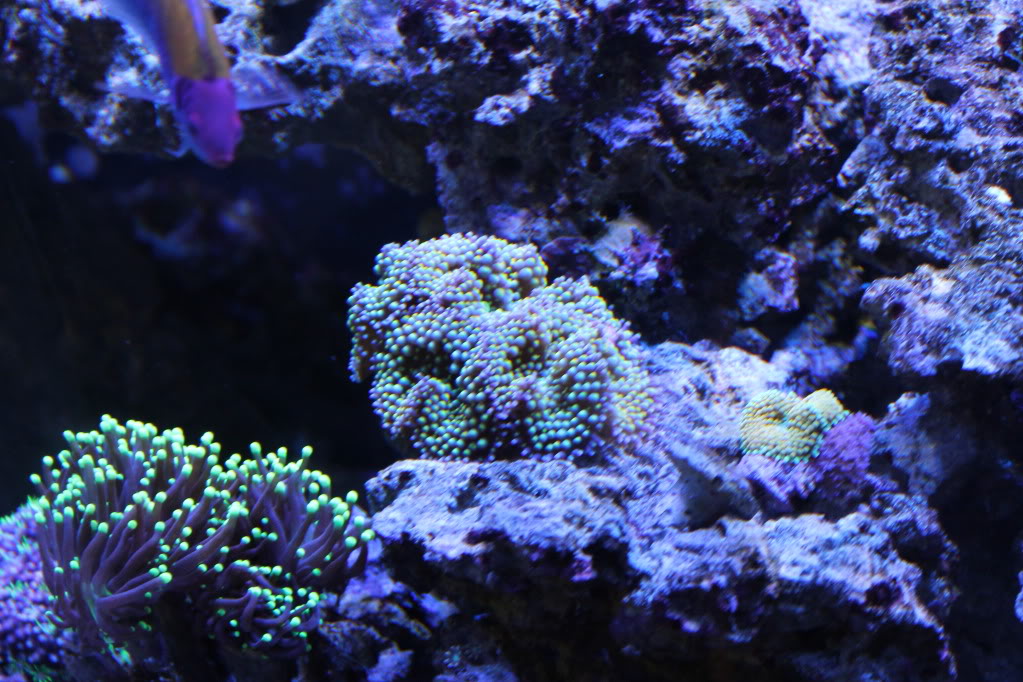
Water Conditions
The below link highlights typical water conditions Ricordeas will require. I have had the best luck with ricordeas when kept in water with 1 to 2 ppm of nitrate when lighting and flow requirements were meat and all other water parameters in line as described in the below link.
https://www.reefaquarium.com/2013/the-basics-of-marine-aquarium-water-parameters/
General Information
As Ricordeas do not have a calcified skeleton structure, they can be more tolerant of swings in the alkalinity, calcium, and magnesium when compared to other corals. However, they will not be very tolerance to swings in pH, Temp, or salinity which is no different than any other coral or fish. They are a very hardly coral making them a good choice for people new to the hobby. As with most other corals, Ricordeas have natural defense mechanisms to protect themselves. They have a chemical defense system based on stinging tentacle that will extend out from its cap. This can be harmfully to certain types of other soft corals and SPS corals. This makes it important to ensure you leave about 2 inches of space between your mushroom corals and other types of corals you may have in your tank. Ricordeas will do best when placed on your live rock in your tank.
As with all corals, the exterior slime coating can be a skin irritant or even highly toxic to humans so please, handle all corals with care. I would recommend wearing rubber glove whenever you handle corals
Fragging
Ricordeas can be easily fragged with very high success
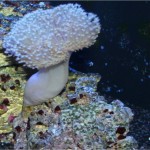
Long Polyp Leather Coral
Scientific Name: Sarcophyton SP
Common Name: Long Polyp Leather, Long Polyp Toadstool Leather
Type of Coral: Softie
Lighting: Moderate and Moderate to Low
Flow: Moderate and moderate to high
Care Level: Easy
Temperament: Semi-aggressive
Appearance
Generally speaking, leather corals are a soft skinned coral with visible polyps all over their skin. A leather coral can look one way in a aquarium and then (over time) look very different when placed in another tank based only on the water parameters, lighting and flow.
There will typically be a short light brown colored base with a head structure on top that will make it look a lot like a mushroom. It will have longer polyps on the head that are a little lighter color than the base and that can range in length of up to a inch. The polyps can be gold to light brown in color. The head of this coral can get as big as 5 inches so you should leave at least 8 to 9 inches of space all around this coral to help prevent any defensive response from this coral
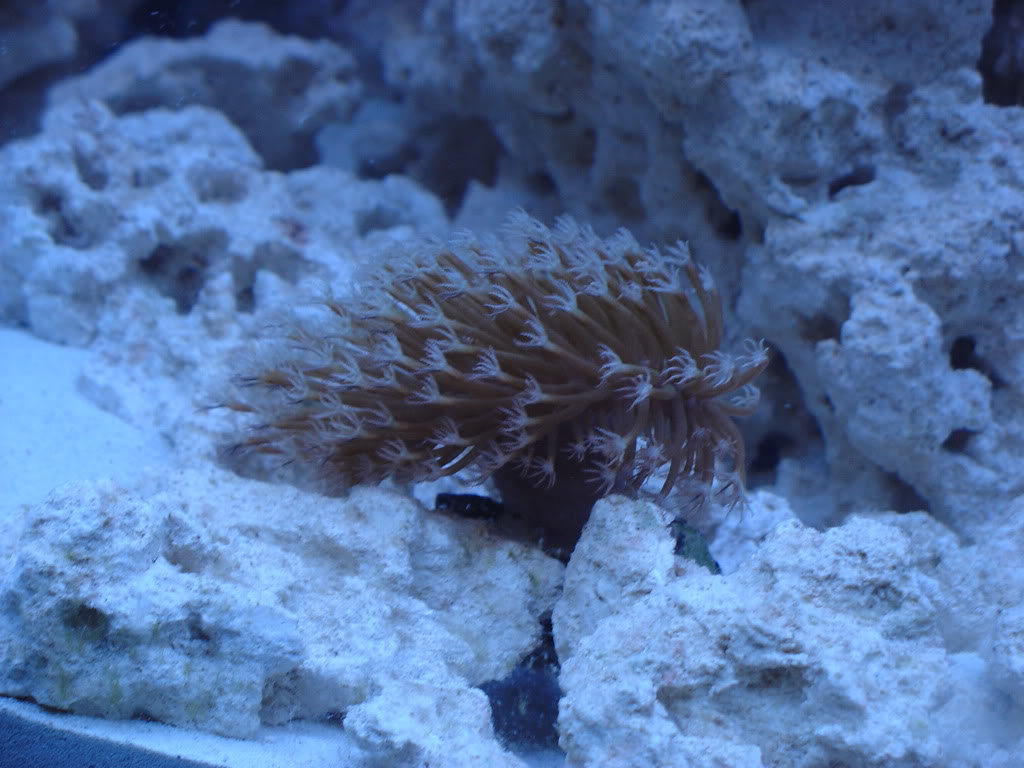
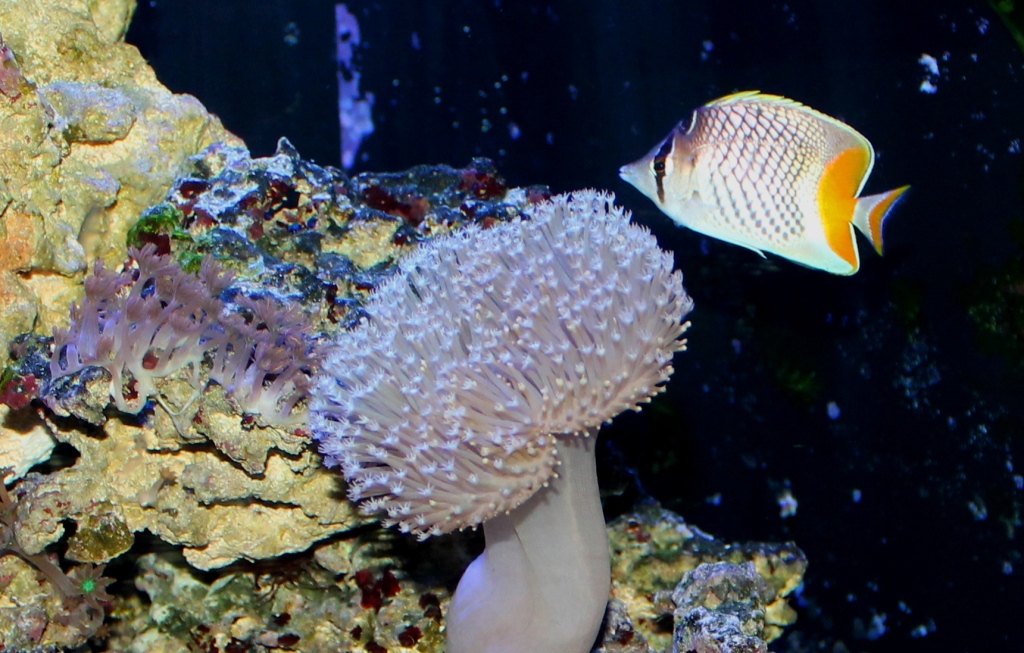
Water Conditions
The below link highlights typical water conditions this leather coral will require. I have had the best luck when they were kept in water with 1 to 2 ppm of nitrate when lighting and flow requirements were met and all other water parameters in line as described in the below link.
https://www.reefaquarium.com/2013/the-basics-of-marine-aquarium-water-parameters/
General Information
They do not have a calcified skeleton structure making them a little more tolerant of some water parameters like calcium. However, they will not be very tolerance to swings in pH, Temp, or salinity which is no different than any other coral or fish. They are a very hardly coral making them a good choice for people new to the hobby. Most leathers have a very effective defensive ability. Leathers commonly have the ability to sting other corals and some fish along with emitting chemicals to ward off other corals from entering their space. For this reason it is very important to understand how big your leather coral can get and plan for enough space between your leather coral and other corals. Just leaving a few inches may not always be enough as some leathers can get surprisingly large. It would also be a good idea to have some carbon in your set-up in case your leather will start to emit defensive chemicals. This is one coral that will be the least likely to be picked on by most fish in the hobby.
As with all corals, the exterior slime coating can be a skin irritant or even highly toxic to humans so please, handle all corals with care. I would recommend wearing rubber glove whenever you handle corals
Fragging
Leathers can be easily fragged with very high success
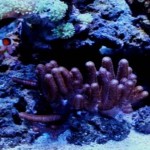
Finger Leather
Scientific Name: Sinularia SP
Common Name: Finger Leather.
Type of Coral: Softie
Lighting: Moderate and Moderate to Low
Flow: Moderate and moderate to high
Care Level: Easy
Temperament: Semi-aggressive
Appearance
Generally speaking, leather corals are a soft skinned coral with visible polyps all over their skin. A leather coral can look one way in a aquarium and then (over time) look very different when placed in another tank based only on the water parameters, lighting and flow.
The polyps will have a little different color than the base. These leathers can get up to 8 inches in height and around 12 inch wide along the base. This coral will need anywhere from 14 to 15 inches of space in a aquarium. Due to their size and coloring, many hobbyists have used them as a center pc coral. They can come in a variety of different colors.
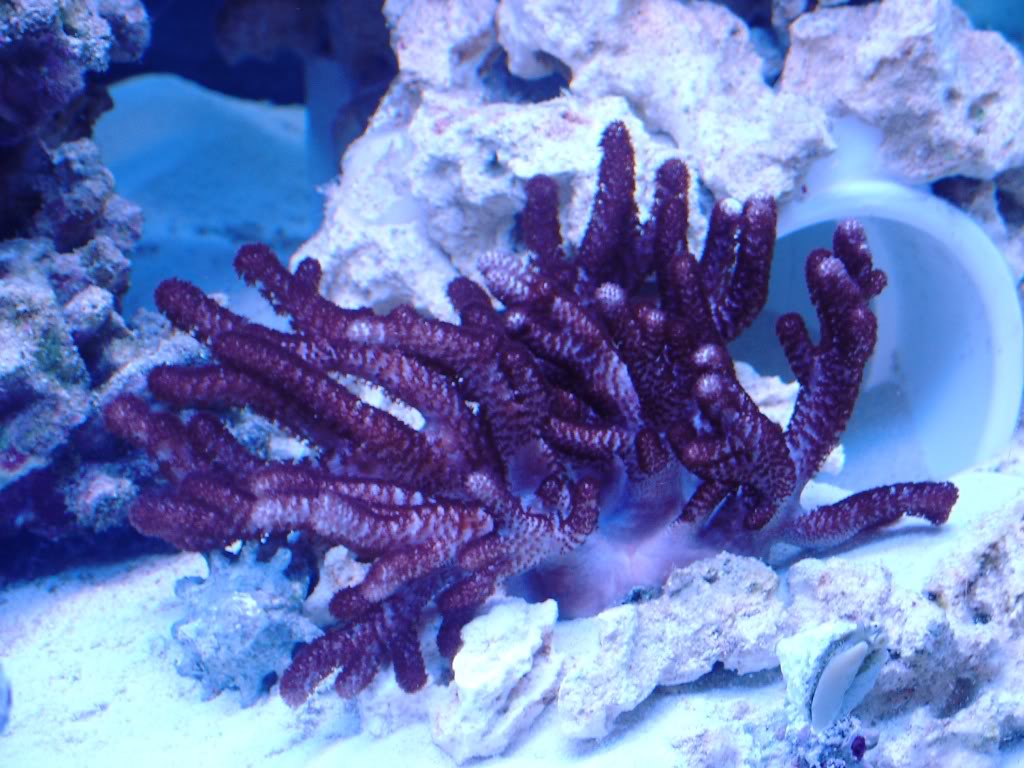
Water Conditions
The below link highlights typical water conditions this leather coral will require. I have had the best luck when they were kept in water with 1 to 2 ppm of nitrate when lighting and flow requirements were met and all other water parameters in line as described in the below link.
https://www.reefaquarium.com/2013/the-basics-of-marine-aquarium-water-parameters/
General Information
They do not have a calcified skeleton structure making them a little more tolerant of some water parameters like calcium. However, they will not be very tolerance to swings in pH, Temp, or salinity which is no different than any other coral or fish. They are a very hardly coral making them a good choice for people new to the hobby. Most leathers have some very effective defensive abilities. Leathers commonly have the ability to sting other corals and some fish along with emitting chemicals to ward off other corals from entering their space. For this reason it is very important to understand how big your leather coral can get and plan for enough space between your leather coral and other corals. Just leaving a few inches may not always be enough as some leathers can get surprisingly large. It would also be a good idea to have some carbon in your set-up in case your leather will start to emit defensive chemicals. This is one coral that will be the least likely to be picked on by most fish in the hobby.
As with all corals, the exterior slime coating can be a skin irritant or even highly toxic to humans so please, handle all corals with care. I would recommend wearing rubber glove whenever you handle corals
Fragging
This leathers can be easily fragged with very high success
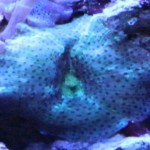
Mushroom Corals
Scientific Name: Actinodiscus SP
Common Name: Mushroom Corals
Type of Coral: Softie
Lighting: Moderate and Moderate to Low
Flow: Moderate
Care Level: Easy
Temperament: Semi-aggressive
Appearance
Mushrooms can also be found in a wide verity of colors and sizes making then a very great choice to add some color to any reef aquarium. They also commonly range in size from ½ inch to 2 inches, but there are a few types of mushrooms that do get larger. The below pictures are just a few examples.
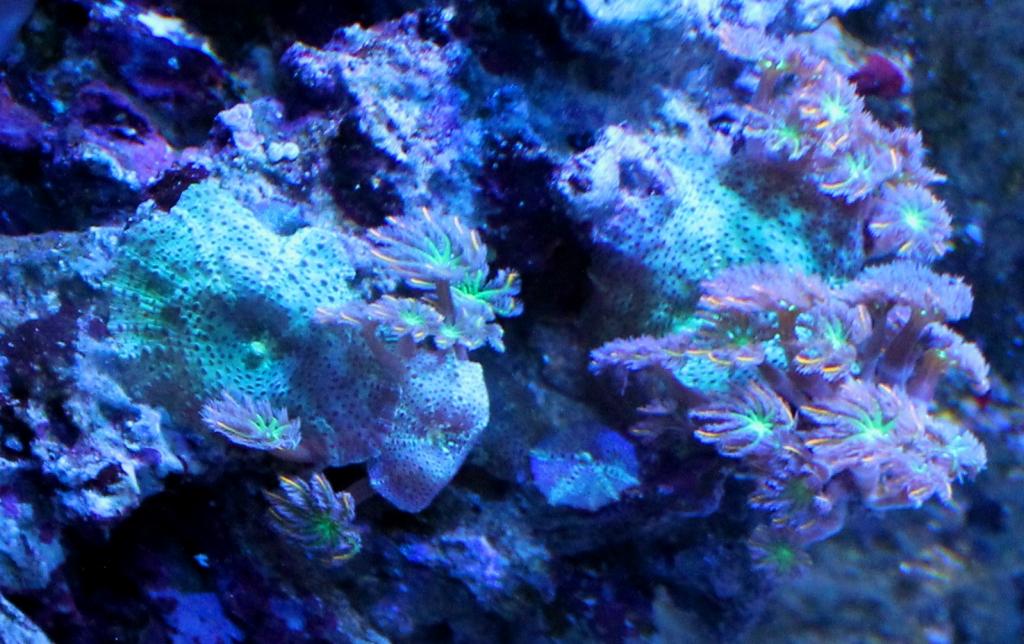
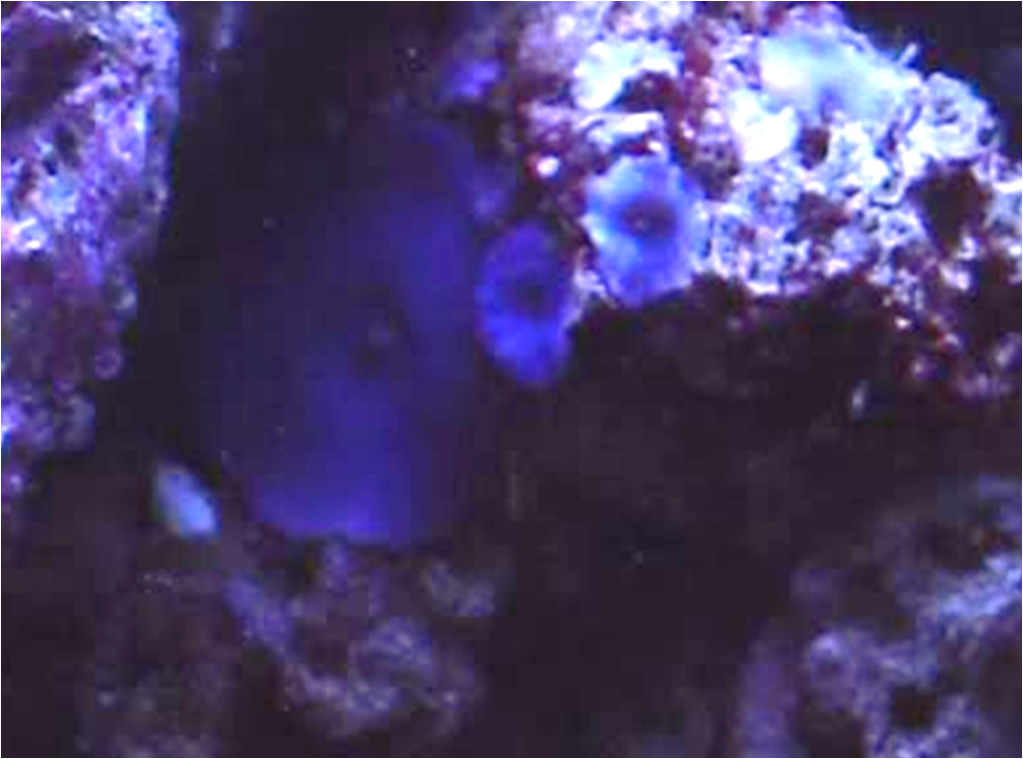
Water Conditions
The below link highlights typical water conditions mushrooms will require. I have had the best luck with mushrooms when kept in water with 1 to 2 ppm of nitrate when lighting and flow requirements were met and all other water parameters in line as described in the below link.
https://www.reefaquarium.com/2013/the-basics-of-marine-aquarium-water-parameters/
General Information
As mushroom do not have a calcified skeleton structure, they can be more tolerant of swings in the alkalinity, calcium, and magnesium when compared to other corals. However, they will not be very tolerance to swings in pH, Temp, or salinity which is no different than any other coral or fish. They are a very hardly coral making them a good choice for people new to the hobby. As with most other corals, mushrooms have natural defense mechanisms to protect themselves. They have a chemical defense system based on stinging tentacle that will extend out from its cap. This can be harmfully to certain types of other soft corals and SPS corals. This makes it important to ensure you leave about 2 inches of space between your mushroom corals and other types of corals you may have in your tank. Mushroom will do best when placed on your live rock in your tank.
As with all corals, the exterior slime coating can be a skin irritant or even highly toxic to humans so please, handle all corals with care. I would recommend wearing rubber glove whenever you handle corals
Fragging
Mushrooms can be easily fragged with very high success
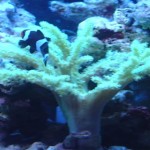
Green Nepthea Leather
Scientific Name: Nepthea SP
Common Name: Green Palua Neptha, Green Neptha Leather
Type of Coral: Softie
Lighting: Moderate and Moderate to Low
Flow: Moderate and moderate to high
Care Level: Easy
Temperament: Semi-aggressive
Appearance
Generally speaking, leather corals are a soft skinned coral with visible polyps all over their skin. A leather coral can look one way in a aquarium and then (over time) look very different when placed in another tank based only on the water parameters, lighting and flow.
The green nepthea will look like a little tree with fat branches and are green in color. The coloring can range from bright almost neon green to a darker green. The branches of the green nepthea leather coral will be covered in short polyps a little lighter in color than the base which, at times, can make it look almost “furry”. This coral should ideally get around 10 inches of tank space for its long term growth.
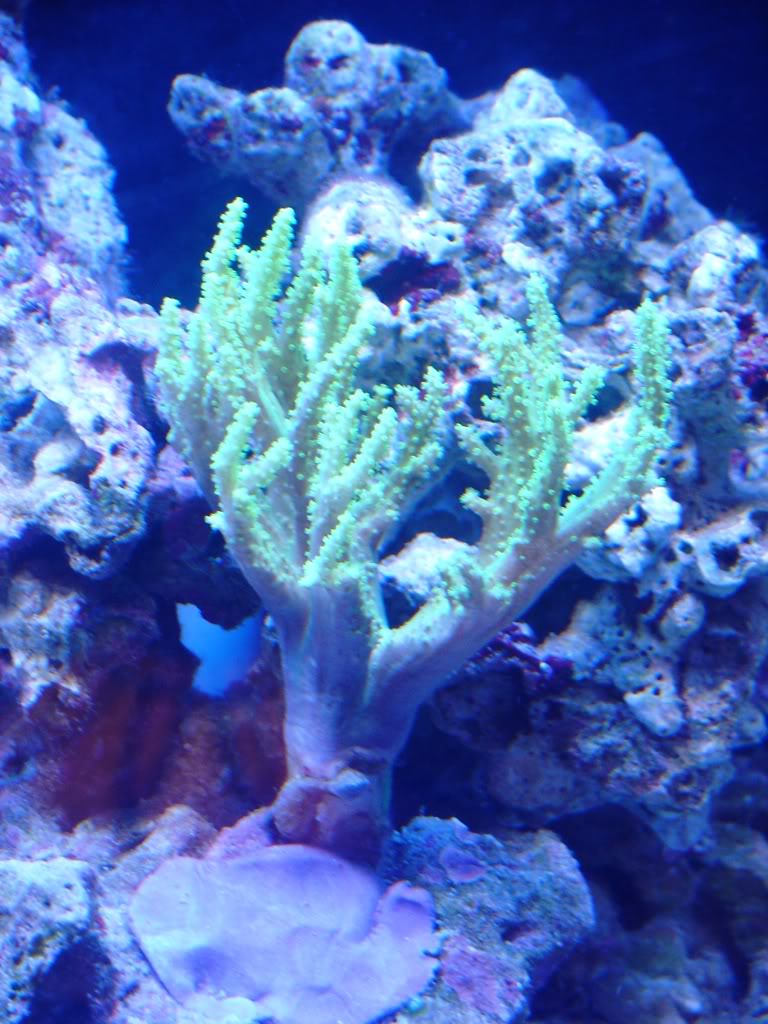
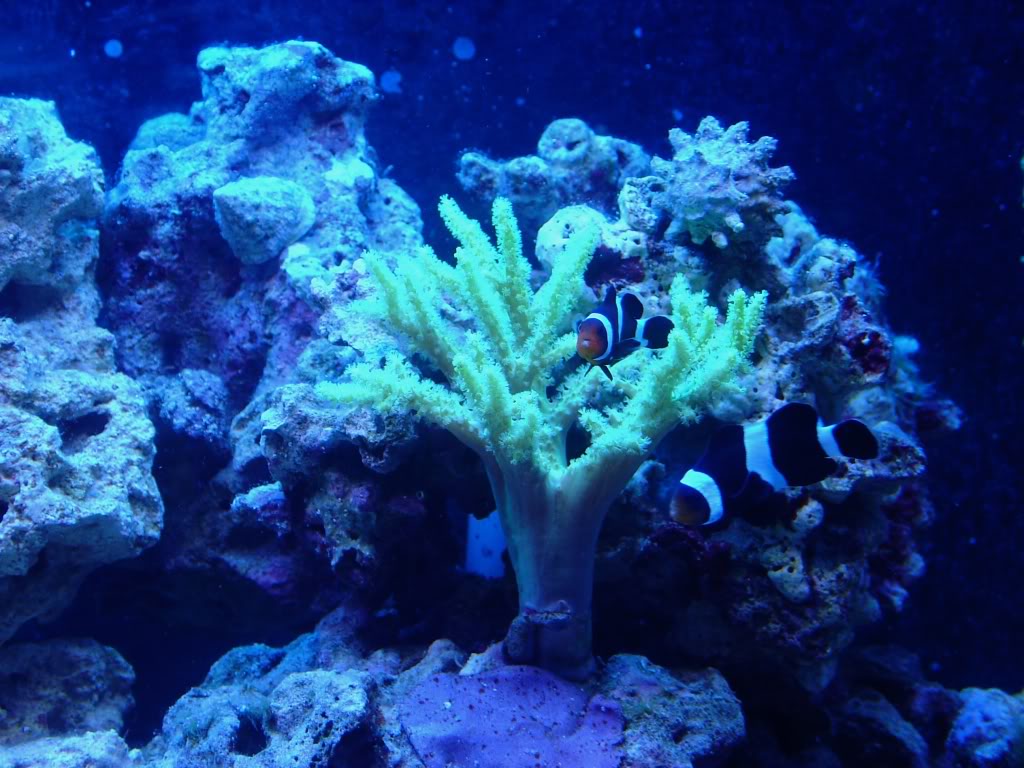
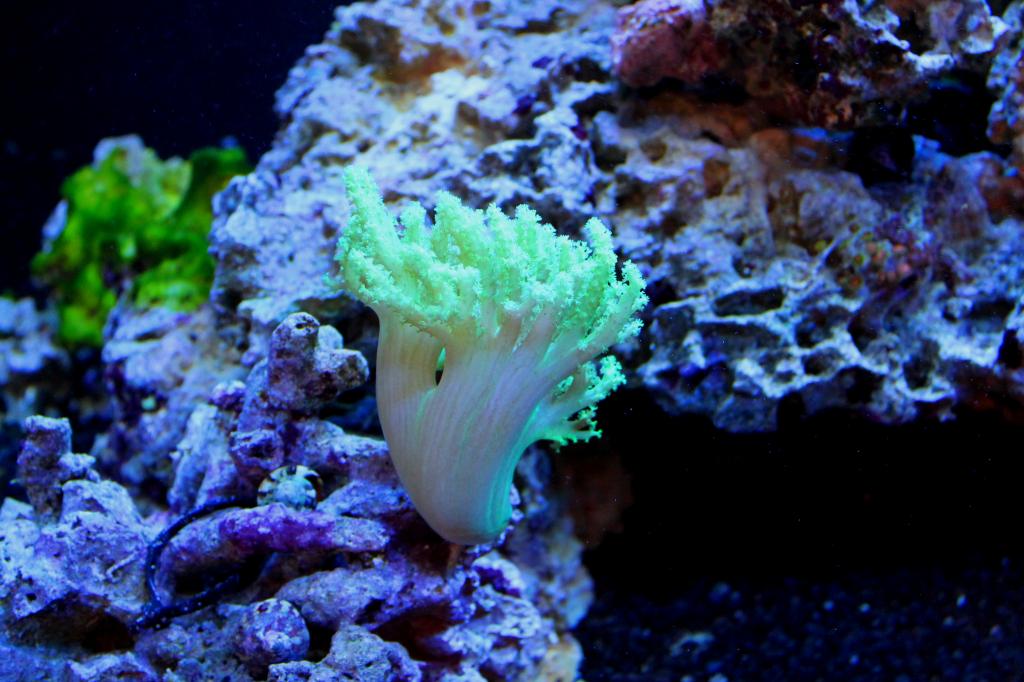
Water Conditions
The below link highlights typical water conditions a green nepthea leather coral will require. I have had the best luck when they were kept in water with 1 to 2 ppm of nitrate when lighting and flow requirements were met and all other water parameters in line as described in the below link.
https://www.reefaquarium.com/2013/the-basics-of-marine-aquarium-water-parameters/
General Information
They do not have a calcified skeleton structure making them a little more tolerant of some water parameters like calcium. However, they will not be very tolerance to swings in pH, Temp, or salinity which is no different than any other coral or fish. They are a very hardly coral making them a good choice for people new to the hobby. Most leathers have some very effective defensive abilities. Leathers commonly have the ability to sting other corals and some fish along with emitting chemicals to ward off other corals from entering their space. For this reason it is very important to understand how big your leather coral can get and plan for enough space between your leather coral and other corals. Just leaving a few inches may not always be enough as some leathers can get surprisingly large. It would also be a good idea to have some carbon in your set-up in case your leather will start to emit defensive chemicals. This is one coral that will be the least likely to be picked on by most fish in the hobby.
As with all corals, the exterior slime coating can be a skin irritant or even highly toxic to humans so please, handle all corals with care. I would recommend wearing rubber glove whenever you handle corals
Fragging
This Leather can be easily fragged with very high success
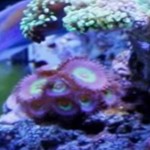
Button Polyps, or, Palys
Scientific Name: Protopalythoa sp.
Common Name: Palythoas, Palys, Button Polyps
Type of Coral: Softie
Lighting: Moderate and Moderate to Low
Flow: Moderate and Moderate to Low
Care Level: Easy
Temperament: Peaceful to Semi-aggressive
Appearance
These corals can come in a wide range colors and color combinations. While the heads can range in size from ½ to 2 inches, and the colony can grow at a fairly fast pace. The edges of the heads can have a different texture when compared with zoas, however, for the most part palys are very similar in appearance to zoas.
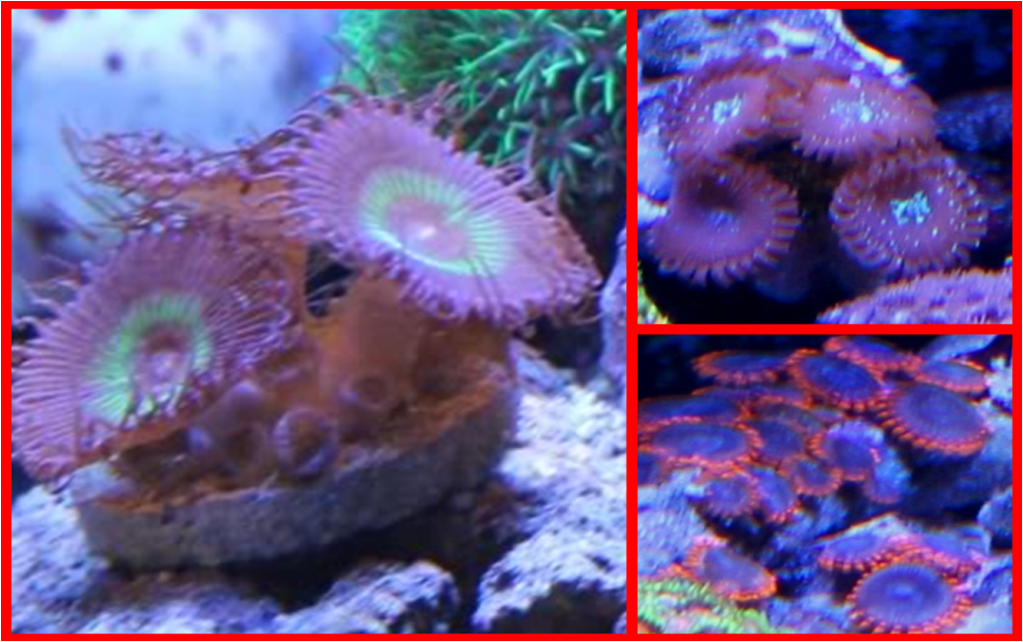
Water Conditions
The below link highlights typical water conditions palys will require. I have had the best luck when they were kept in water with 1 to 2 ppm of nitrate when lighting and flow requirements were meat and all other water parameters in line as described in the below link.
https://www.reefaquarium.com/2013/the-basics-of-marine-aquarium-water-parameters/
General Information
Palys are a colonial coral, meaning they form a colony of many individual polyps all connected together. As they do not have a calcified skeleton structure, they can be more tolerant of swings in the alkalinity, calcium, and magnesium when compared to other corals. However, they will not be very tolerant to swings in pH, Temp, or salinity which is no different than any other coral or fish.. This makes palys are a very hardy soft coral placing them amount the easier to keep corals and making them an excellent choice as corals for beginners. They have also been known to grow very fast, almost like an invasive coral. Palys are also the least aggressive when it comes to defensive abilities. They can quite frequently become damaged and even start losing heads when they fall victim to another coral’s sting or exposed to those toxins. In addition, the protective slime like coating that is on the palys can sometimes be a delicacy among the “coral nipping” fish. This corals typically dies when a fish removes the outer slim coating from the coral.
The exterior slime coating on some types of palys is among the most toxic to humans as compared to other common corals in the hobby. For this reason, please handle palys with care. I would recommend wearing rubber glove whenever you handle corals
Fragging
Palys can be easily fragged with very high success